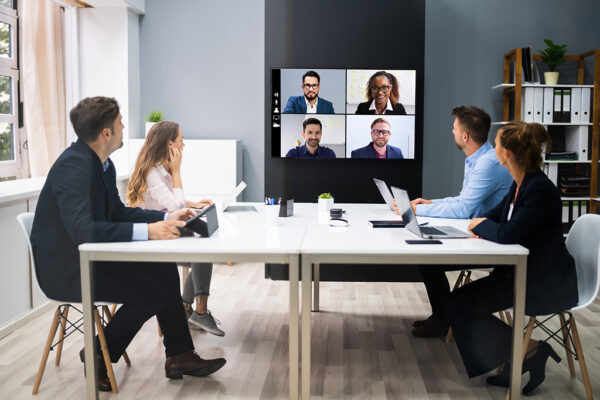
Hybrid management, regardless of the sector (agricultural, agri-food or hotel-catering), poses specific constraints to managers who must deal with different working methods: physical face-to-face and teleworking.
Practices have changed, management must adapt
The manager who does not have hybrid management codes can find himself in difficulty:
- New tools are implemented
- Professional support for teams needs to be strengthened
- Informal exchanges are more rare and communication between teams less fluid
- Non-verbal communication is more difficult to perceive
The proliferation of digital tools also amplifies the risks of hyperconnection, the barrier between private life and professional life can be undermined.
Faced with these challenges, the manager must position himself as a facilitator between the teams and project management. This new way of working requires employees to be increasingly empowered with increased autonomy. The manager then becomes a project manager and a mediator in his team.
Three fundamentals to consider for success
Accept change
This is a necessary first step to create a framework conducive to a hybrid organization: the company and the employees need to accept these changes and live with them on a daily basis. Today, 36% of managers have changed the way they manage their team and 24% of managers surveyed consider it normal for part of the team to work out of sync. *
Organize the use of digital
A hybrid organization requires, at its inception, support to find the right balance: hybrid meetings, chat systems, collaborative platform, etc. The manager’s role is then to support his team in the use of digital:
- Define availability ranges, with for example a shared calendar
- Define the regularity and length of breaks to limit the risk of hyperconnection
- Reduce meetings to make them more productive
- Define the different communication channels and for which communication they are dedicated
Supervise hybrid work
Hybrid management brings together all the practices for using the digital tools made available, but also the organization of workspaces: teleworking, co-working, face-to-face. The manager is both a logistician and a leader. He is responsible for instilling a vision and motivating his teams remotely and face-to-face. Different methods are possible for this:
- Organize team rituals
- Organize more frequent one-to-ones
- Set up more regular progress points
- Set up shorter deadlines
Today, the hybridization of organizations is no longer an option, it requires building relationships of trust with its teams.
*Source : Management & RSE
These articles might interest you

Attracting generations Z and Y to the Clean Label: the rules of the game for businesses
Clean Label is winning over consumers! A simple label, ingredients like plant extracts, natural flavors, or preservatives of natural origin, and the elimination or reduction of synthetic additives… This approach, adopted by food industry manufacturers, fully meets the growing consumer demand for healthier and more traceable products. According to research firm Future Market Insights, the […]

Interim management in Nantes: a solution for the food industry
At Leaderia Transition, the first interim management company to specialize in the agri-food sector, we decided to open a branch in Nantes, close to our customers and at the heart of one of France’s most dynamic agri-food ecosystems. This Nantes branch has considerably strengthened our local presence, as well as our links with local agri-food […]

Replace an absent General Manager
A former 3* hotel, renovated and extended 3 years ago, has become a 5* hotel with 106 rooms and 3 restaurants and a spa, which employs 135 people. The hotel mainly attracts a high-end and international clientele in season, with high standards. Pending the recruitment of a permanent Director, Alexandra Labarthe, interim manager specializing in […]